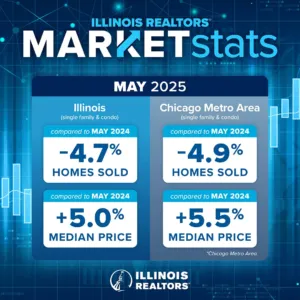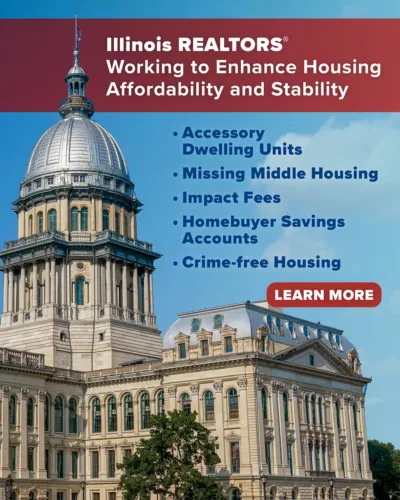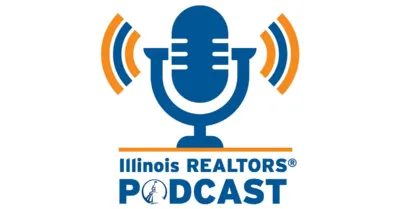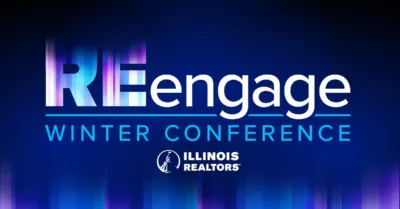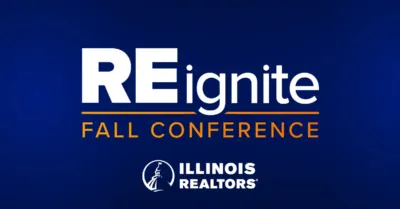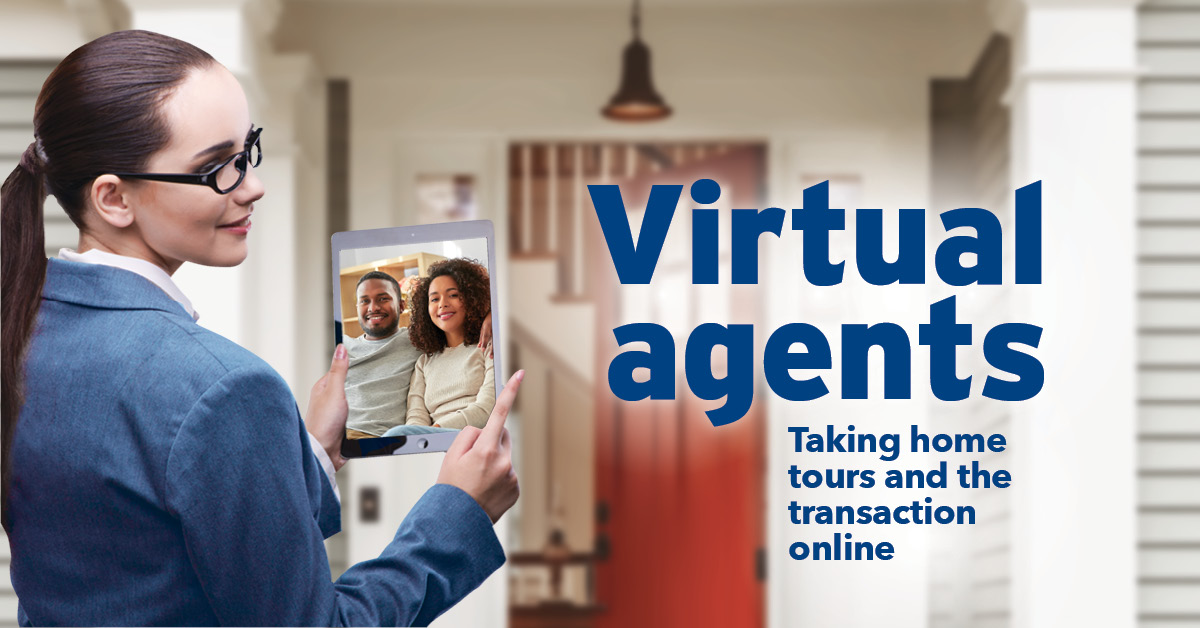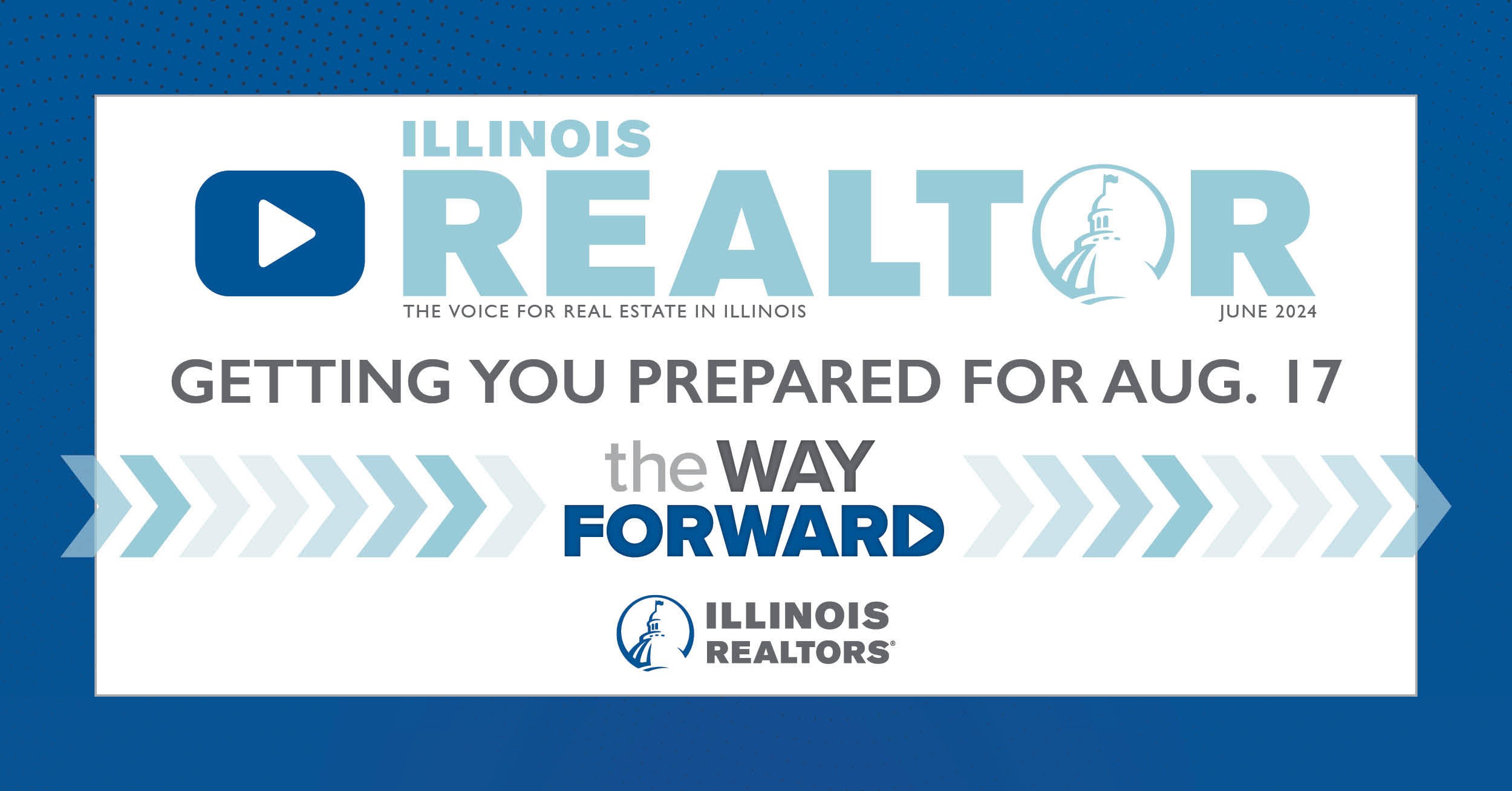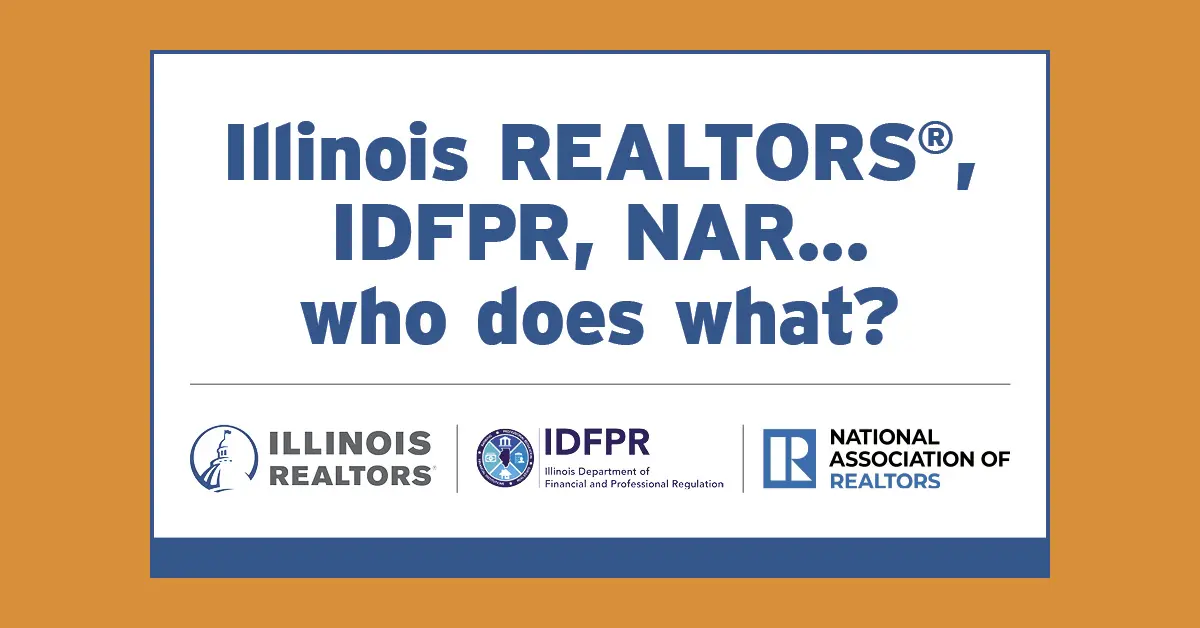Ryan Gorman got his real estate license 20 years ago.
“I thought I needed something a little extra for my business,” says Gorman, a broker at Campo Realty Inc. in Pawnee.
So, a few years after becoming an agent, he looked into virtual tours and invested in a nationwide company called Real Tour Vision (RTV, Inc.). With that company’s software and platform, he opened up his own photography and virtual tour business, 360 Through the Door Virtual Tours, while still being a REALTOR®.
When the pandemic stopped Illinois REALTORS® from holding open houses, Gorman received an increase of more than 25 percent in requests from real estate agents wanting his video and virtual tour service.
Virtual tours used to be reserved for some of the most luxurious and large properties. But experts believe this technology will become the norm from now on with most homes, despite their price or location. Clients will expect it.
Even before COVID-19, 46 percent of home buyers found virtual tours very useful, according to the 2019 NAR Home Buyer and Seller Generational Trends Report.
“A virtual tour can be interactive by adding in amenities in the area that you can’t get in photographs,” Gorman says. “You can click and get a nice brochure. You can highlight so much inside and outside the house that just photographs can’t capture.”
The price depends on the size of the home and the company doing the filming.
Virtual tours can be done in a variety of ways – depending on an agent’s budget, time, technology skills and preferences of the seller. The agent can create the video with a smartphone or specialized 3D camera or hire it done.

Ways to create and use virtual tours
One of the easiest ways to show off a home virtually is to get out the smartphone and start recording while walking through each room.
With permission from the seller, agents can use this as a live virtual open house, showing it on platforms such as FaceTime or Zoom where permitted viewers can ask questions along the way. A video can also be made to stream on the agent’s website and other sites.
“You can be creative and buy a Samsung camera for $150,” says Robert Koenekamp, CEO and founder of Aerial Look. “You can get 360-degree views, still photography and videos for your listing all out of one camera.”
His company, headquartered in North Carolina, has been pioneering 3D, virtual reality, and drone technologies on America’s East Coast, China, Dubai, and London.
About six years ago, Koenekamp bought a Matterport 3D camera, which had just been created to offer 360-degree views in a video. He spent eight months on the road introducing the new technology to REALTORS®, developers and others across the country.
“But it’s never been an easy sell until now,” he says. “Some agents still don’t really want it, but their clients want it and ask for it.”
He admits no one wants to spend extra money. But virtual tours can be cheaper than photography.
“It’s definitely for the forward-thinking REALTOR® out there. When you are supposed to serve the client, but you don’t implement the right solutions available, it’s a disservice to your clients and your brand,” he adds.
Recently, Frank Pavone had more phone calls, website traffic, and other inquiries about 3D virtual tours. He owns and operates Virtual Vista LLC in Oak Brook. He got his real estate license about six years ago. But shortly after getting into real estate, he began photographing listings for other agents in the office and ended up growing it into a successful business.
He offers a series of services including Matterport 3D virtual tours, aerial photos and videos, floor plans, virtual staging and HD photography. With a single scan, a Matterport camera creates 3D walk-throughs, photos, floor plans, videos and more.
“I don’t think people will go back to pre-COVID ways anytime soon. People are not going to want everyone walking through their house,” he says.
When using virtual tours, REALTORS® look more professional, Pavone adds.
Ninety percent of agents using virtual tours say it helps them build a stronger brand in the marketplace, and 95 percent of people are more likely to call about homes with 3D walk-throughs, according to a Matterport survey.
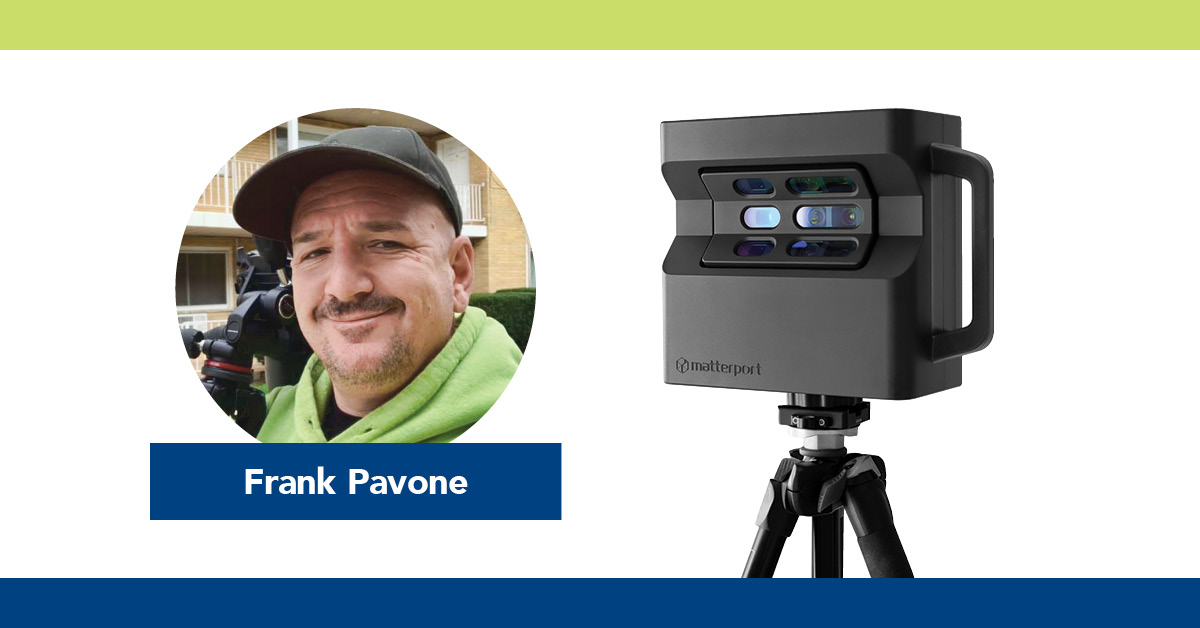
Virtual tours becoming commonplace
When the option for in-person open houses was off the table this spring, live virtual open houses became the only way to get people’s eyes inside the home besides private showings.
“We adapted to virtual open houses. We are seeing agents in our area adapting to the technology,” says Kendra Sipes, a broker with The Knell Group of Coldwell Banker Real Estate Group in Peoria. She also serves as the 2020 Peoria Area Association of REALTORS® President.
“It was on their list, but now it’s forced on them to get it done,” she adds.
She has some agents purchasing their own Matterport 3D cameras. Some just use their smartphones.
“This is becoming the norm,” she explains. “Right now, virtual tours or 3D tours are an additional service to the seller. They don’t have so many people coming through their houses.”
But with virtual tours growing in popularity, brokers will have to develop the content around those listings on a much deeper level, says Niko Apostal, principal broker at The Apostal Group at Keller Williams Chicago-Lincoln Park.
“The expectations will be more and more if you really want to attract a buyer. You have to generate some serious content especially in super competitive areas,” he says.
For instance, you can be standing near the blazing fireplace with a cocktail in your hand and set the stage of what can be done with a space.

Virtual home buying
Besides being able to view homes with virtual tours, homebuyers and sellers have more digital options these days to stay safe and have more conveniences.
“Most of it can be done digitally, but the inspectors and appraisers still have to do their jobs in person,” says Niko Apostal, principal broker at The Apostal Group at Keller Williams Chicago-Lincoln Park.
“Everything else can be done virtually,” he adds. “We have digital contracts, digital closings, and notarizations being done digitally. Ninety-eight percent of closings can be done upfront digitally.”
At the end of March, Secretary of State Jesse White and Gov. J.B. Pritzker partnered to temporarily allow Illinois notaries public the authority to perform remote, online notarizations during the COVID-19 pandemic under the governor’s executive order. Notaries can use real-time electronic technologies with audio and visual communication.
When the stay-at-home rules began in the state and real estate became an essential business, Kendra Sipes, an agent with The Knell Group of Coldwell Banker Real Estate Group in Peoria, says her agency put together an entire Virtual Buyer Experience guide on its website. The information explains everything available digitally to allow people to search and view homes, put in offers and eventually close on their dream home without being in a room with a bunch of people.
The guide helps buyers understand all their digital options including showing homes virtually in several ways, wiring earnest money*, using electronic signatures, viewing live walk-throughs with inspectors, moving to paperless with many lenders and the evolving capability of off-site closings.
“The COVID-19 pandemic has really forced all of us as REALTORS® and consumers to adapt to new technologies much quicker than we were originally anticipating,” she says.
She believes a lot of great things have come out of this new way of doing business.
“We are anticipating that a lot of buyers and sellers will continue to utilize new technologies and more virtual experiences going forward even when the shelter in place and restrictions are removed,” she adds.
*Legal Note: Be aware of wire fraud attempts any time money is being wired, especially during this time. Bad actors insert themselves into the transaction, typically by using email addresses that look almost exactly like the actual emails in the transaction group. Verify email addresses and any wire instructions by calling a known contact on a known number to be sure everything is accurate. Find resources to protect yourself from cybercrime at www.IllinoisRealtors.org/Legal/Legal-A-Z/ Cybercrime
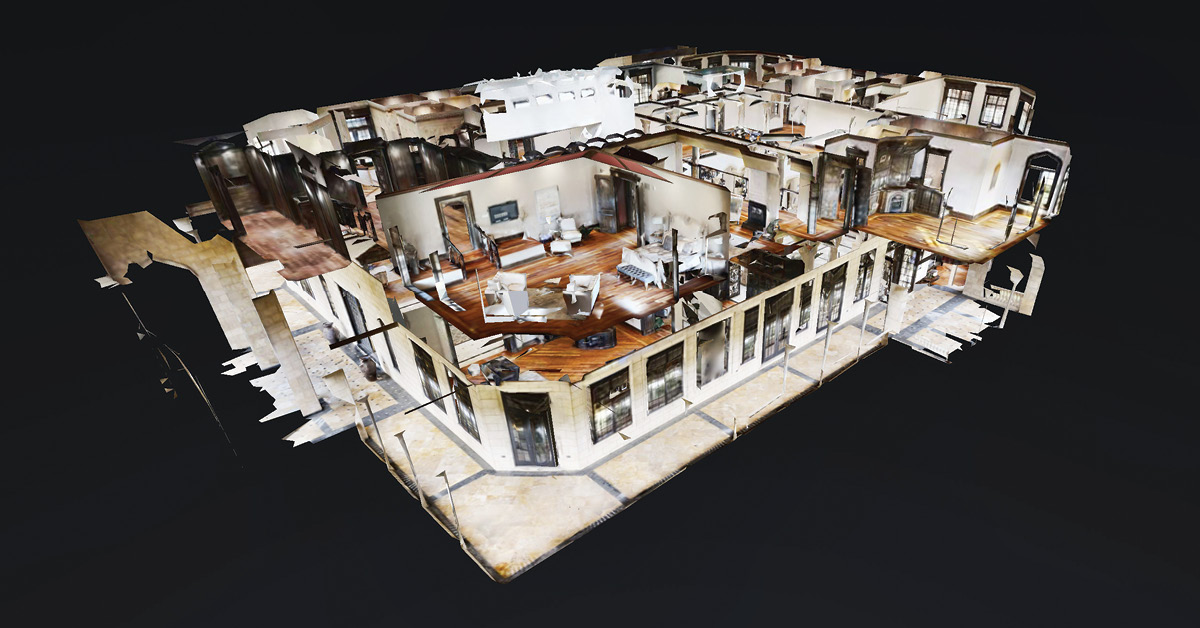
Other technologies to choose
Not only can you make your own virtual tour or pay someone else to create tours for your clients, you can also offer your clients other add-ons to enhance the look of the listing and intrigue more buyers.
Virtual staging – This is when furniture and accessories are added virtually to an empty room. You can also take a room with furniture that’s outdated, virtually remove it and then add in newer furniture, Pavone says.
Dollhouse view –The Matterport 3D camera allows you to offer a dollhouse image of the space. It shows the entire home as if it were a dollhouse giving you the angles and the flow from one room to another. “It’s a much better way of showcasing the size and shape of the home,” says Apostal.
Drone virtual tours – The advantages to having drone videos for the outside of the home comes down to information. “If you have a house near schools, a park, pond or golf course, the aerial view is very good for that,” Pavone says.
Editor’s Note: Illinois REALTORS® does not endorse the companies or products mentioned in the article. REALTORS® are encouraged to make their own informed decisions on products for their business.
Also, make sure you get proper permissions from the seller to use these staging technologies, proper authority or license to the use them and understand the extent of that use if they are offered by third parties and not something you create yourself.
Making virtual tours sizzle
Whether you plan on hiring someone to do your virtual tours for you or you use your own camera, the experts have some tips to make everything better.
- Offer the dollhouse view. “I get a lot of requests for this,” Pavone says. “It’s such a great way to see the layout of the house.”
- If you make the video yourself, make it buyer-driven not agent-driven, Koenekamp says. “Everyone is afraid they might say something wrong. But consumers love realism.”
- Have professional equipment if doing it yourself. “It is just more elevated and can create a real showcase,” says Sipes. You need good editing techniques, a stabilizer if you are walking while doing a video, good lighting for the tour, and a good microphone.
- Keep each virtual tour as short as possible. “If you are doing it live, just do a 10-15 minute segment, then shut it down,” says Apostal. “You can save each segment as videos on your website or other sites. Viewers can ask questions on your chat box.”
- Make sure the property is decluttered, blinds and shades open, and all lights are on before filming. “You will probably spend 30 minutes getting the home ready even after the homeowner prepped for it,” Gorman says.
“I don’t know if virtual tours will net a REALTOR® more money,” Sipes says. “But it will help with how many days the home is on the market, and maybe it will help buyers narrow down and focus on properties they are more interested in for actual showings.”

